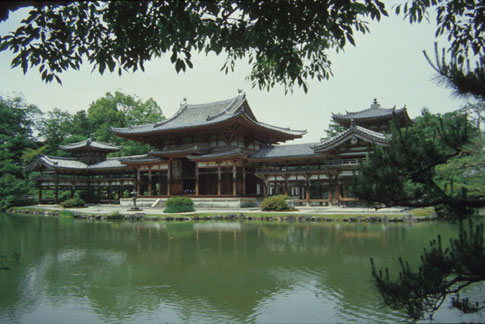
The stream garden known as Kyuseki is one of many early gardens discovered by archaeologists working in the ancient capital of Nara. Along with the remains of a pond garden found in the area of the Imperial palace, it suggests a direct knowledge of earlier Korean and Chinese gardens, but also points toward the more natural gardens of later Japan (the Imperial pond garden—To-in—is featured elsewhere on this website). Choose a view point from the map or click on Tour the Garden for more views. A more detailed history of the garden is reached by clicking on History.
During the same period in which archaeological excavations at the site of the Imperial Palace in Nara revealed the remains of an 8th-Century pond garden (the To-in, pictured elsewhere on this website), workers preparing the ground for a new post office discovered the remains of a stream garden--a yarimizu-- that probably dates to the same period. Named Kyuseki, it may have been the garden of a Nara nobleman, although a detached Imperial villa has also been suggested as the site. The winding stream possibly echoes the Chinese, Korean, and early Japanese tradition of a "stream banquet" (kyokusui no en) during which guests attempted to come up with an original poem before cups of wine, set floating from a point upstream, arrived at their position along the riverbank. In this case, the poets would have been hard-pressed, since the stream measures only 55 meters in length.
As in the case of the To-in, all that remain are the stream bed and the rocks placed along the banks of the stream. It differs from the To-in, however, in the fact that the stream bed itself is lined with stones, all of them roughly the same size and shape. There are some interesting groups of larger stones located on the banks of the stream, the majority of them on the eastern bank and often emphasizing a sharp bend in the stream. Whether these can be related to the stone grouping of the To-in, or whether they have any “meaning” in a geomantic sense, is impossible to say.
While these recently excavated Nara gardens must certainly owe some of their features to Chinese and Korean gardens, they appear to be more natural and less architectural than what is known of their mainland antecedents. In that sense, they do seem to anticipate certain aspects of later Japanese gardens that are more indigenous than imported. For the moment, however, the relationship of Japan’s earliest gardens to those of Korea and Japan is still open to question.

